December 11, 2020
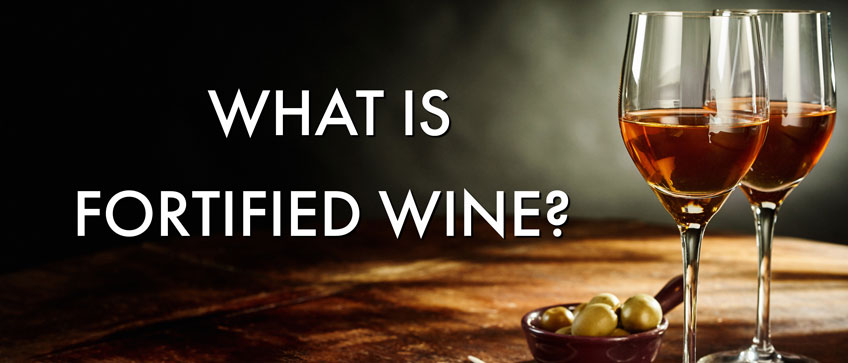
If you enjoy a glass of wine for every meal, you're going to love the idea of fortified wine! The ultimate night cap, fortified wine has been enjoyed for centuries by people as a dessert. This final course of a meal has a long and interesting history and we're here to demystify this underrated wine. After you learn more about these delicious wines, you'll want to stock your wine refrigerator with every variety available.
What is Fortified Wine?
Better known as dessert wine, fortified wine has a higher alcohol content than other wines but not because of the distilling process like many believe. The higher alcohol content actually comes from the addition of spirits to the wine. Why are spirits added to fortified wine? Well, that goes into the history of the fortified wine.
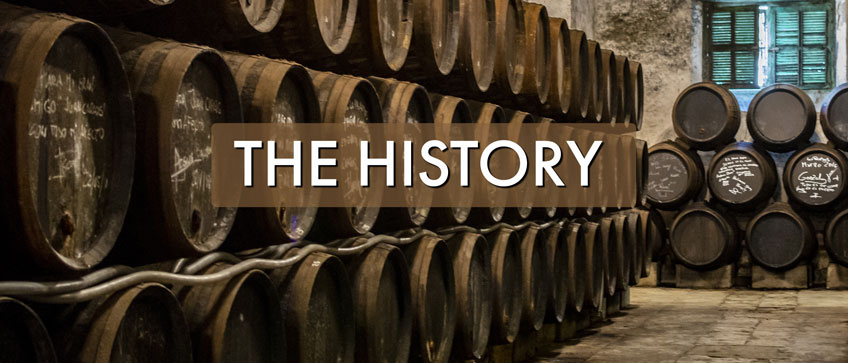
The History
Prior to the invention of refrigeration and wine bottling techniques, the wine casks used were not air-tight, causing wines to oxidize and turn acidic during long sea voyages. In order to prevent loss of product, winemakers started adding spirits to their wines to reduce spoilage, which led to the invention of fortified wines.
Since this was quite an unorthodox practice among winemakers, some people opposed this method and believed that failing to ferment the wine fully, leaving extra sugar, was simply a way to cover up poor quality wine. However, this trend of fortifying wines has continued to our modern day and these wines are enjoyed by many.
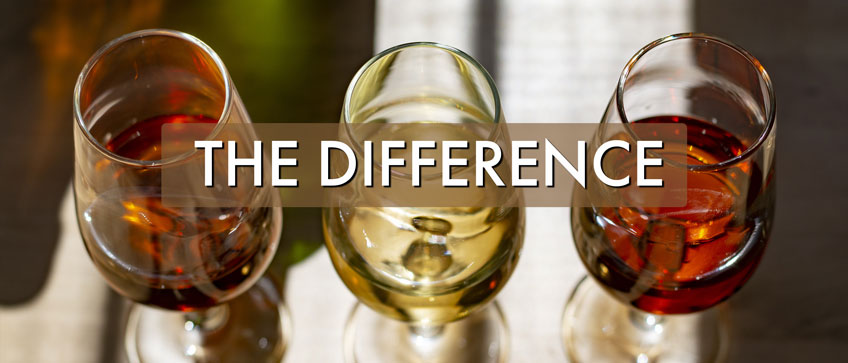
The Difference Between Sweet and Dry Fortified Wines
Both sweet and dry fortified wines go through the same process of fermentation and then the addition of spirits to the wine. However, when winemakers discovered they could alter the taste of the wine by adding spirits at different times during the winemaking process, they developed sweet and dry fortified wines. When spirits are added before the wine has finished fermenting, it results in a sweet fortified wine. When added after fermentation, you will have a dry fortified wine.
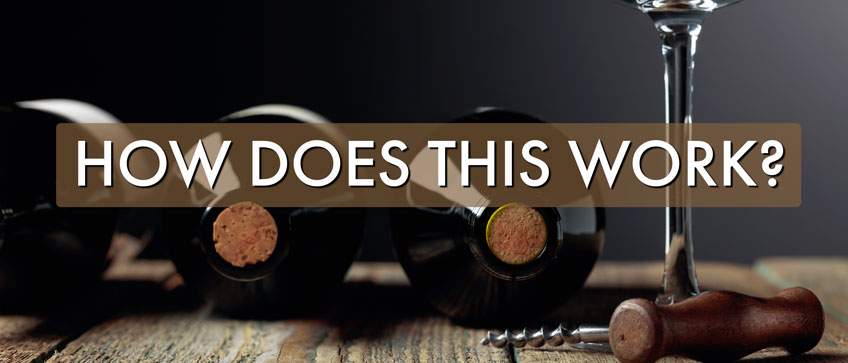
How does this work?
Wine fermentation occurs when yeast breaks down sugar molecules in grapes to produce ethanol. Eventually, without any more sugar to feed the yeast, they will die off and the fermentation process is complete. If winemakers wait for the yeast to completely break down all the sugars, it results in a dry wine with a high alcohol percentage. If the spirit is added early on in the fermentation process, it will kill the yeast, leaving behind more sugar and resulting in a sweeter wine with a high alcohol content even though the wine did not complete its fermentation process. If the wine lacks sweetness, additional sweetening agents will be added to the wine.
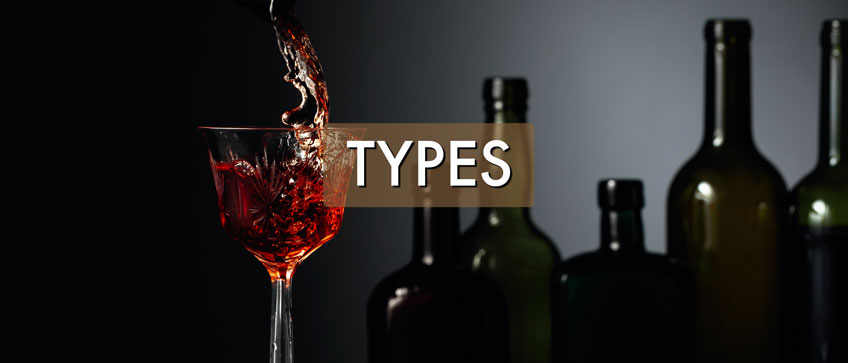
Types of Fortified Wines
While there are many varieties of fortified wines, we're going to go over the most popular varieties you will come across. Each winemaker has their own style and every fortified wine will have its own unique characteristics.
Port
Port wines originate from the Douro Valley in Portugal. This typically sweet red wine is created when brandy is added in the middle of the fermentation process. It is often enjoyed as dessert wine because of its richness and sweetness. While typically a red wine, you can find white, rosé, and an aged style called Tawny Port.
Port wines typically have a sweet taste with the most common notes being raspberry, blackberry, caramel, cinnamon, and chocolate sauce. It is recommended that ports should be served just below room temperature, around 60 °F (16 °C). This wine is known to pair beautifully with rich or bold cheeses, chocolate and caramel desserts, salted and smoked nuts, and sweet-smoky meats.
Sherry
This fortified wine comes from the region of Jerez de la Frontera in Spain. Since brandy is added after the fermentation process, sherry is typically a dry wine. However, you can find sherry blends that have more of a natural sweetness or added sweetness after fermentation.
Due to its dry finish and lower sugar content, sherries tend to have a more umami and earthy flavor but you will also find rich, nutty, and caramel notes. Some varieties will also provide a rich, fruity, and raisin notes. Like all wine, there are so many varieties with different flavors to suit your mood or palate. Most sherries are served cold or chilled, depending on the variety.
Madeira
Hailing from the region of Madeira, Portugal, this fortified wine can range from sweet to dry. Typically made by adding brandy, madeira can be a dry or sweet wine depending on when the brandy is added. What is particularly unique about the madeira making process is that the wine is actually exposed to heat and oxygen, which is typically the bane of wine making. This originates from the tropical voyages that typically exposed these wines to hot climates and oxygen.
Madeira notes range from being very crisp and fresh to smokey and caramel-like. Common notes are coffee, cacao, raisins, and burnt caramel. Dry madeiras are often served slightly chilled at about 55-60 degrees Fahrenheit to maintain its fresh crispness. Sweet ones are poured slightly cooler than room temperature.
Marsala
Produced in the small town of Marsala on the island of Sicily, Italy, this fortified wine is typically dry but sweet varieties are available too. Many people enjoy using marsala as a cooking wine to add complex flavor to their dishes. You can discern the sweetness level of marsala by its color and age.
Amber marsalas will give you notes of nuts and fruits, while ruby marsalas have more tannins and a fruity flavor. Gold marsala has a rich golden color, produced with white grapes, it has notes of vanilla, hazelnuts, and licorice. The younger wines tend to have more sugars while wine aged for over 10 years have no added sugar, making them much drier. Marsalas a best served slightly chilled around 55-60 degrees to maintain its crisp freshness. Sweet marsala is best when poured at room temperature or slightly cooler.

How to Drink Fortified Wines
Each fortified wine has a unique, small, and typically stemmed glass that allows you to pick up the fragrant nose of the wine and enjoy the rich flavors. Glassware is extremely important for enjoying fortified wines because of the complex flavors. Learn more about the anatomy of a wine glass here and how it plays a role in tasting wines. Since they are high in alcohol content, you will often be served small portions and you are meant to slowly sip the wine. Fortified wines are typically enjoyed as a dessert but can be paired with desserts, cheeses, nuts, and charcuterie. As you can tell, maintaining a consistent temperature with fortified wine will enhance and maximize your experience. Learn more about recommended wine serving temperatures in our blog here. We highly recommend using a wine refrigerator to ensure your fortified wines are ready to drink but also to maintain the quality of opened bottles.


 Single Faucet Kegerator Beer Dispensers
Single Faucet Kegerator Beer Dispensers Dual Faucet Two Tap Kegerators
Dual Faucet Two Tap Kegerators Triple Faucet Three Tap Kegerators
Triple Faucet Three Tap Kegerators Undercounter Built-In Kegerators
Undercounter Built-In Kegerators Outdoor Kegerator Beer Dispensers
Outdoor Kegerator Beer Dispensers Commercial Kegerators
Commercial Kegerators Mini Kegerators
Mini Kegerators Cold Brew & Nitro Coffee Dispenser Kegerators
Cold Brew & Nitro Coffee Dispenser Kegerators Carbonated Water Kegerators
Carbonated Water Kegerators Home Brew Kegerators
Home Brew Kegerators 15" Kegerators
15" Kegerators Kombucha Equipment
Kombucha Equipment Guinness® Dispensing Kegerators
Guinness® Dispensing Kegerators Vending Kegerators
Vending Kegerators Wine Kegerators
Wine Kegerators Kegerator Cabinets
Kegerator Cabinets Kegerator Covers and Accessories
Kegerator Covers and Accessories Kegerators
Kegerators Kegerator Conversion Kits
Kegerator Conversion Kits Kegs & Keg Accessories
Kegs & Keg Accessories Beer Faucets
Beer Faucets Beer Shanks
Beer Shanks Draft Beer Towers
Draft Beer Towers Keg Taps Couplers
Keg Taps Couplers Regulators & Gas Equipment
Regulators & Gas Equipment Beer & Gas Line Hose
Beer & Gas Line Hose Co2 and Nitrogen Air Tanks
Co2 and Nitrogen Air Tanks Beer Line Cleaning Equipment
Beer Line Cleaning Equipment Drip Trays
Drip Trays System Fittings
System Fittings Jockey Boxes
Jockey Boxes Keg Beer Party Pumps
Keg Beer Party Pumps Glassware & Accessories
Glassware & Accessories Guinness® Dispensing Equipment
Guinness® Dispensing Equipment Remote Glycol Systems
Remote Glycol Systems Wine Cooler Refrigerators
Wine Cooler Refrigerators Wine Cellar Cabinets
Wine Cellar Cabinets Wine Racks
Wine Racks Cooling Units
Cooling Units Wine Dispensing Systems
Wine Dispensing Systems Wine Glasses
Wine Glasses Wine Accessories
Wine Accessories Howard Miller Wine & Spirits Furniture
Howard Miller Wine & Spirits Furniture Wine Making
Wine Making Nitro Hot Draft System
Nitro Hot Draft System Ready to Drink Bag-in-a-Box Coffee Dispenser
Ready to Drink Bag-in-a-Box Coffee Dispenser Nitrogen Infusers
Nitrogen Infusers Nitrogen Beer Regulators
Nitrogen Beer Regulators Nitrogen Tanks & Generators
Nitrogen Tanks & Generators Nitro Cold Brew Coffee Kegs
Nitro Cold Brew Coffee Kegs Cold Brewed Coffee Tools
Cold Brewed Coffee Tools Espresso Machines
Espresso Machines Cleaning Equipment
Cleaning Equipment Outdoor Appliances
Outdoor Appliances ADA Appliances
ADA Appliances Panel Ready Appliances
Panel Ready Appliances Commercial Grade Appliances
Commercial Grade Appliances Beverage Centers
Beverage Centers Refrigerators
Refrigerators Ice Makers
Ice Makers Water Dispensers & Accessories
Water Dispensers & Accessories Freezers
Freezers Blenders & Juicers
Blenders & Juicers Home Brew Equipment Kits
Home Brew Equipment Kits Fermentation Equipment
Fermentation Equipment Boiling and Mashing Equipment
Boiling and Mashing Equipment Home Brew Beer Kegs
Home Brew Beer Kegs Home Brew Kegerator Conversion Kits
Home Brew Kegerator Conversion Kits Brewing Tools
Brewing Tools Home Brew Ingredients
Home Brew Ingredients Cleaning Chemicals
Cleaning Chemicals Test Equipment
Test Equipment Home Brew Beer Bottles and Bottling Equipment
Home Brew Beer Bottles and Bottling Equipment Brewery Fittings
Brewery Fittings Draft Beer Equipment
Draft Beer Equipment Homebrewing Equipment
Homebrewing Equipment Wine Equipment
Wine Equipment Luxury Appliances and Refrigeration
Luxury Appliances and Refrigeration Coffee Equipment
Coffee Equipment Home Bar & Barware
Home Bar & Barware Kombucha
Kombucha The Beverage Blog
The Beverage Blog Frequently Asked Beer Questions
Frequently Asked Beer Questions Shop by Brand
Shop by Brand Shop by Category
Shop by Category



